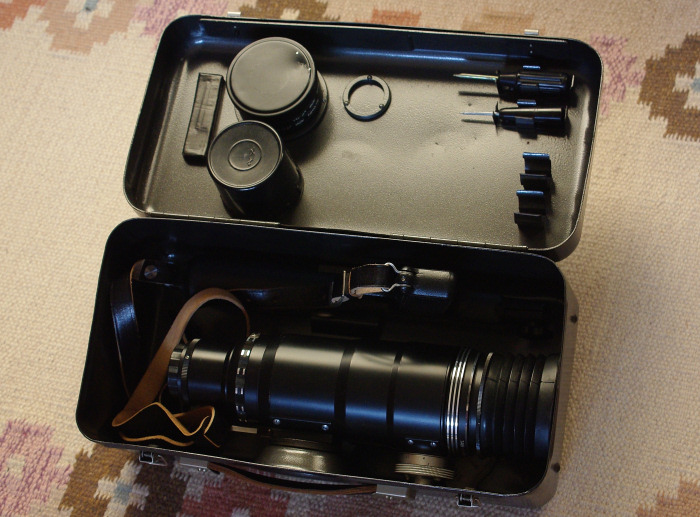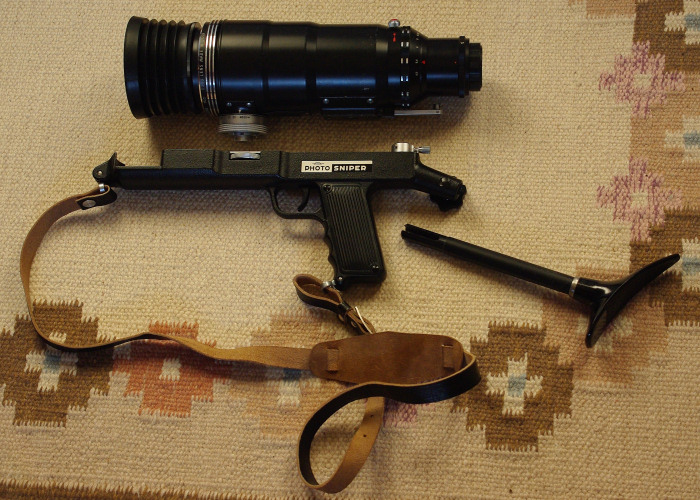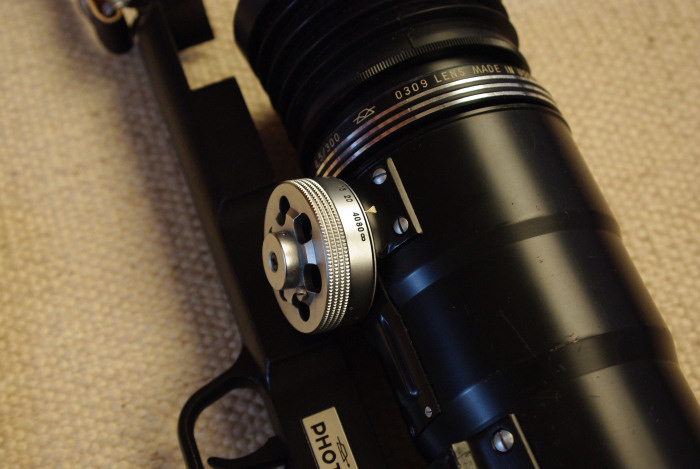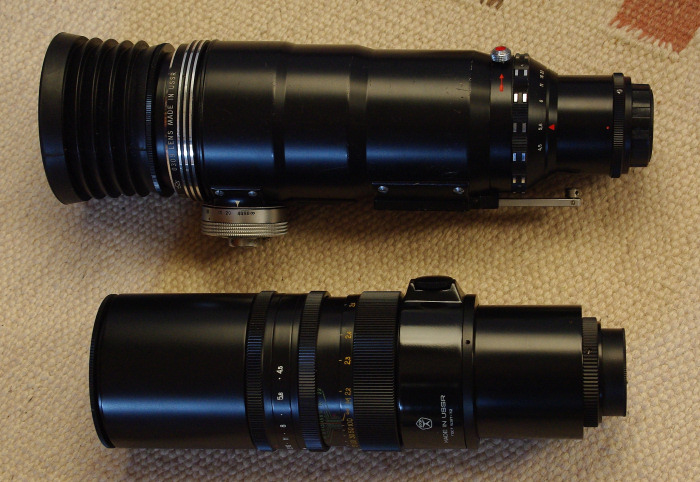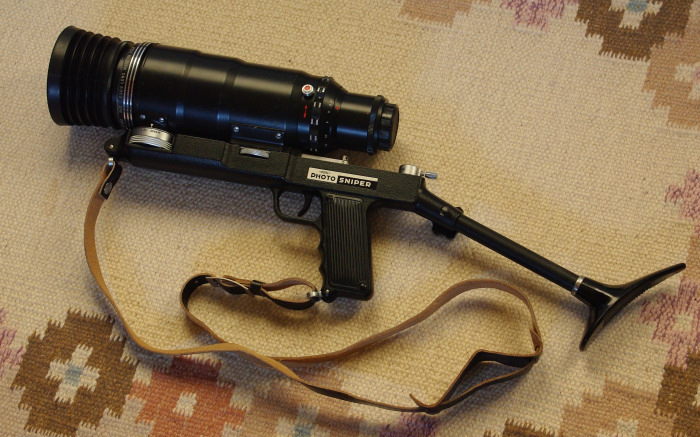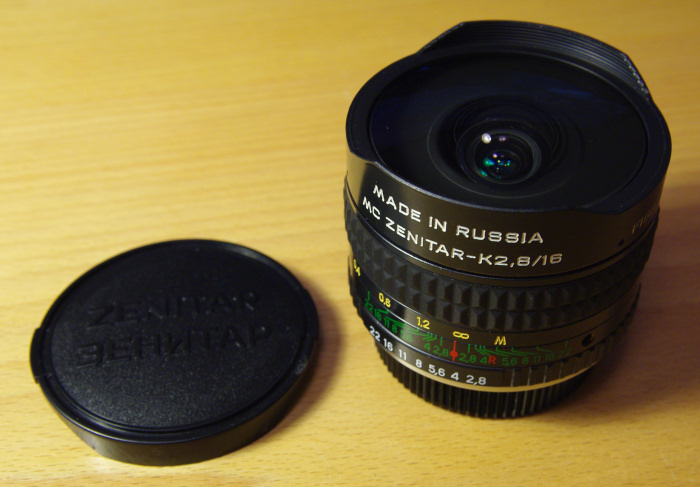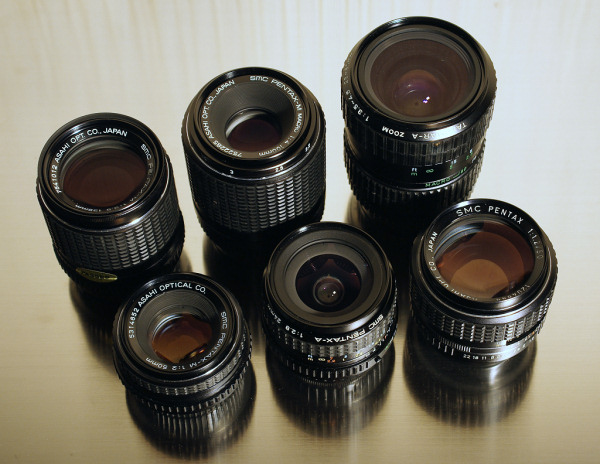

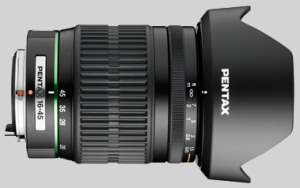 |
SMC Pentax-DA 16-45/f4.0 ED AL This is the lens I selected instead of the standard kit lens that comes with the K200D body. A good performer with priority on wide angle (little too short on the tele end) and with a strange twist: reverse zoom. It's shortest length is on the tele end and at widest setting, you will have shadowing when the internal flash is used. Strange design... |
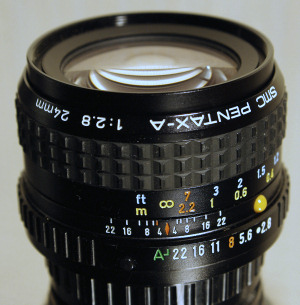 |
SMC Pentax-A 24/f2.8 K200D eqv. focal length: 36 mm This lens works in the fully automatic modes if the aperture ring is set to "A"-position. Manual usage is possible if the Pentax-M approach is used. Picture wise, I can't say much as the lens was seldom used on the old film camera. |
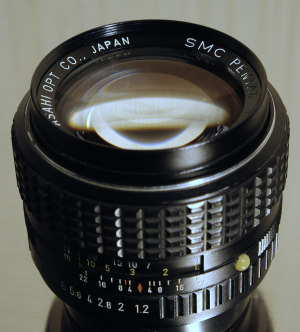 |
SMC Pentax-M 50/f1.2 K200D eqv. focal length: 75 mm This is really a masterpiece. High quality both in build and optically. The large aperture of 1.2 really gives you a clear viewfinder image and and a shallow depth of field as no other lens available. The lens uses a fully manual aperture (no "A" setting), so use the manual method on the camera with this one. |
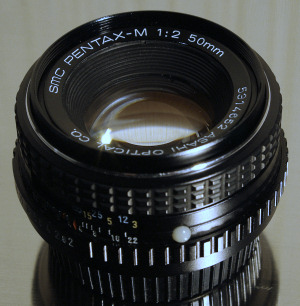 |
SMC Pentax-M 50/f2.0 K200D eqv. focal length: 75 mm This is what a "kit"-lens for an old Pentax MV looks like. The standard 50 mm with an aperture of 2.0 must be one of the most common lensen from the old Pentax time. These are rather cheap but they are good performers. Fully manual operation only. |
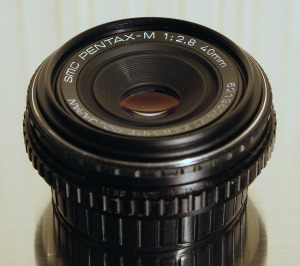 |
SMC Pentax-M 40/f2.8 K200D eqv. focal length: 60 mm This is the "pancake", the smallest lens Pentax ever created with all M features still available. I haven't tested it that much so I can give a vote for the image quality but the build quality is typically good and the lens is really compact. And with the field of view as a 60 mm, it is little to long for my type of shooting (as the only lens to bring with me). |
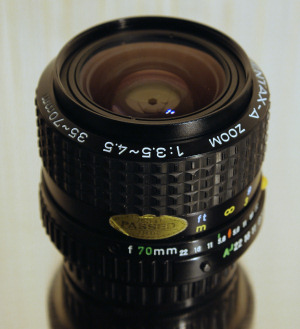 |
SMC Pentax-A 35-70/f3.5-4.5 K200D eqv. focal length: 52.5 - 105 mm A compact and rather lightweight mid-range zoom. It delivers good images and takes little space, making it a good walk-around lens. the A-settings allows for full auto exposure. The zoom-action is of push-type. |
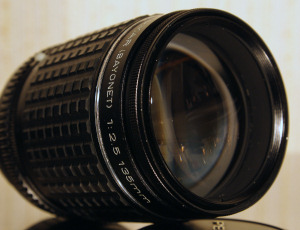 |
Takumar Bayonet 135/f2.5 K200D eqv. focal length: 202.5 mm A eBay-find for a decent price. Reading at forums gives the impression that this is a bad lens. The main reason is the lack of multi-coating, making it sensitive to flare. Extra care needs to be taken to protect the lens from tray light. If done right, it should produce nice images. The large aperture makes it a good low-light lens too. |
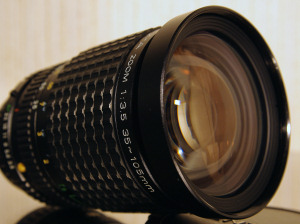 |
SMC Pentax-A 35-105/f3.5 K200D eqv. focal length: 52.5 - 157.5 mm This is my personal favorite. The lens generate amazing images with sharpness to kill for. Together with the DA 16-45, it is the base of my kit, covering 95% of my shooting. The lens is very well build, all metal. Due to that, it is rather heavy. The A-setting allows for full auto exposure if needed. |
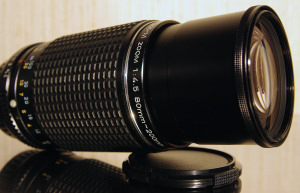 |
SMC Pentax-M 80-200/f4.5 K200D eqv. focal length: 120 - 300 mm A decent tele-zoom with fixed aperture. Haven't used it that much but the few pictures I have seen from it are good (but not excellent). Sturdy built, rather compact but with one drawback: the push-action zoom creeps, making the lens shift if pointed up or down. |
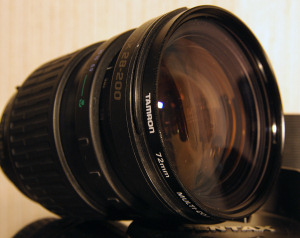 |
SMC Pentax-FA 28-200/f3.8-5.6 K200D eqv. focal length: 42 - 300 mm This was my travel lens when I shot 35mm film. A good 7x zoom range made it useful. But the big zoom range did affect the image quality - the pictures were good but not perfect. It works fine (full auto, both focus and exposure) on the K200D, but the FOV magnification "destroys" the wide end, making it more like a normal to long tele lens. A bonus could be that only the best part of the lens is used (center part) - need to test that... |
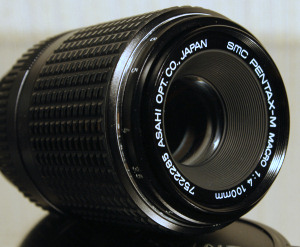 |
SMC Pentax-M Macro 100/f4.0 K200D eqv. focal length: 150 mm A nice macro lens that become a little bit too long at the K200D. Still, it is useful as a short tele and the macro works but you need a steady hand (or a tripod). Fully manual on this one only. |
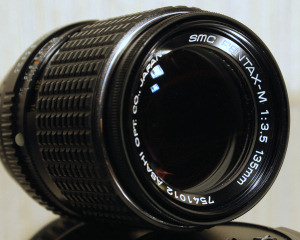 |
SMC Pentax-M 135/f3.5 K200D eqv. focal length: 202.5 mm A short tele that became a little bit longer. This lens was never used at the film time as zooms was more practical. So, I have no idea about performance. Fully manual only. Built-in lens hood - clever. |
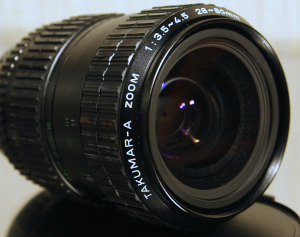 |
Takumar-A Zoom 28-80/f3.5-4.5 K200D eqv. focal length: 42 - 120 mm A descent short zoom that works in automatic modes (manual focus only). Could be a nice addition to the 16-45, but I need to test it in some real situations first and see the results. The build quality is decent and it has a macro setting (magnification unknown). |
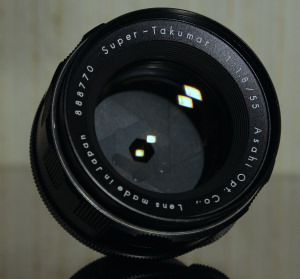 |
Super-Takumar 55/f1.8 K200D eqv. focal length: 82.5 mm An old classic that deserves it's place in the camera bag. An M42 lens that gives you a nice portrait FOV when placed on a DSLR. I haven't used it that much yet (tricky to mix M42 with K-bayonet in the same kit) but it should deliver very good pictures. As all M42 lenses, this must be run in stop-down mode with manual metering only (switch on lens must be set to "M"). |
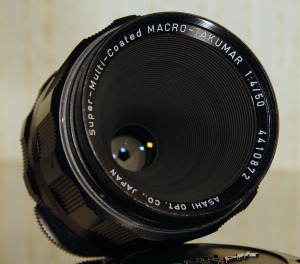 |
Super-MC Macro-Takumar 50/f4.0 K200D eqv. focal length: 75 mm The newest addition to my Pentax collection. A very compact macro prime lens with a capability of 1:2 magnification without any accessories. The lens is a M42, so an adapter is needed and stop-down metering is required. It should deliver very good images (experiences from other users). |
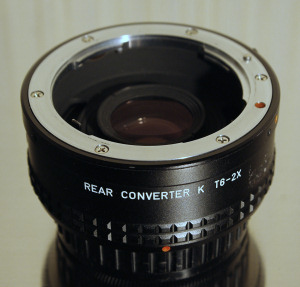 |
Pentax Rear Converter K T6-2X Not a real lens but an accessory that multiplies the attached lens' focal length. Useful together with tele lenses as an cheap way to go super tele. Of course, an image degradation is expected and you loose 2 stops. |
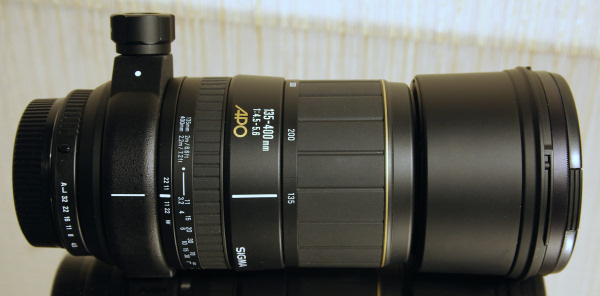 |
|
Sigma 135-400/f4.5-5.6 APO K200D eqv. focal length: 202.5 - 600 mm This is the long-shooter that did a short job at Kennedy Space Center/Forida. A nice pic of the space shuttle at the launch pad was caught. Anyhow, with the new camera, the lens became even longer, making it a true super-tele. Must really try this one out in the wild. The lens is fully automatic, both focus and exposure. |
